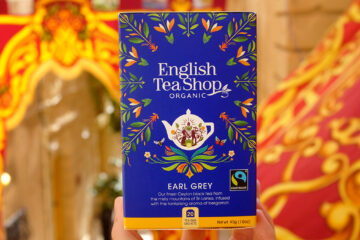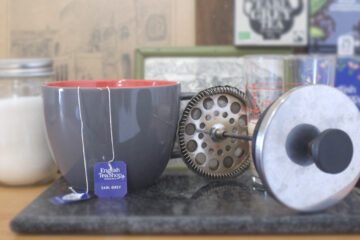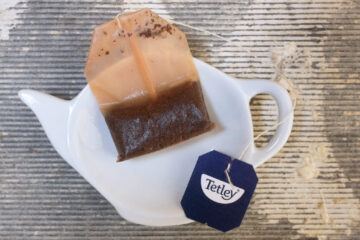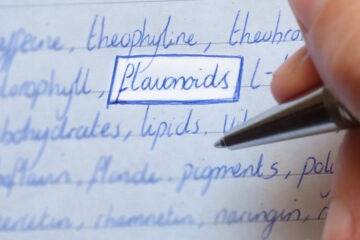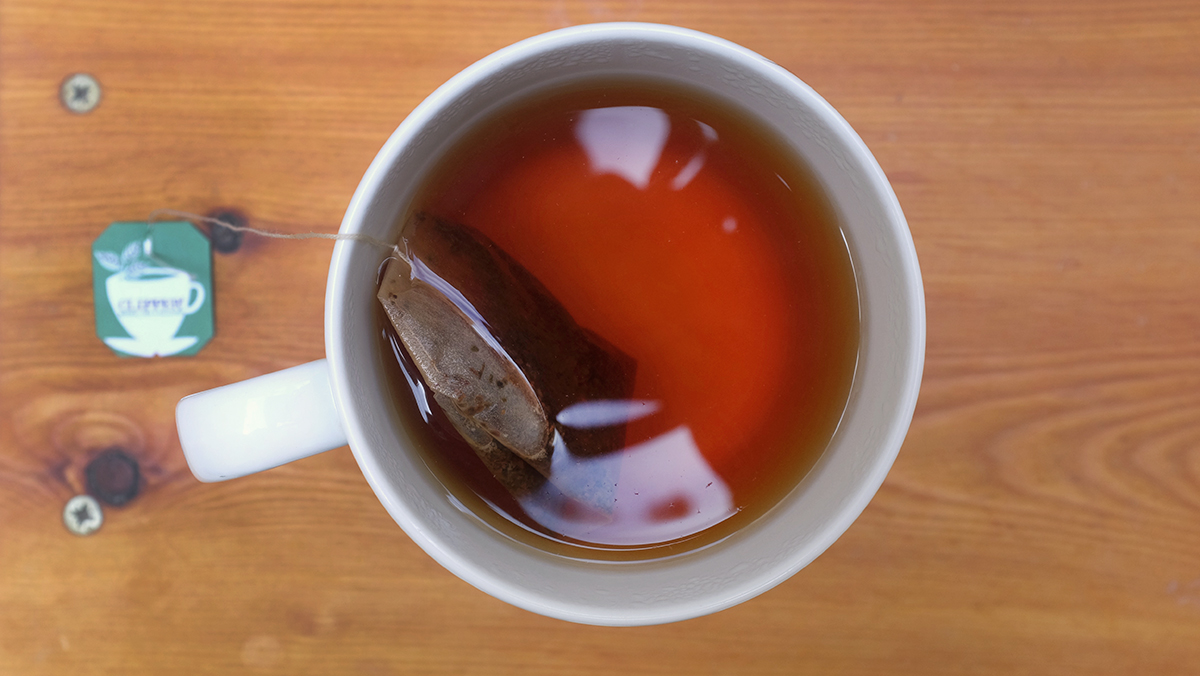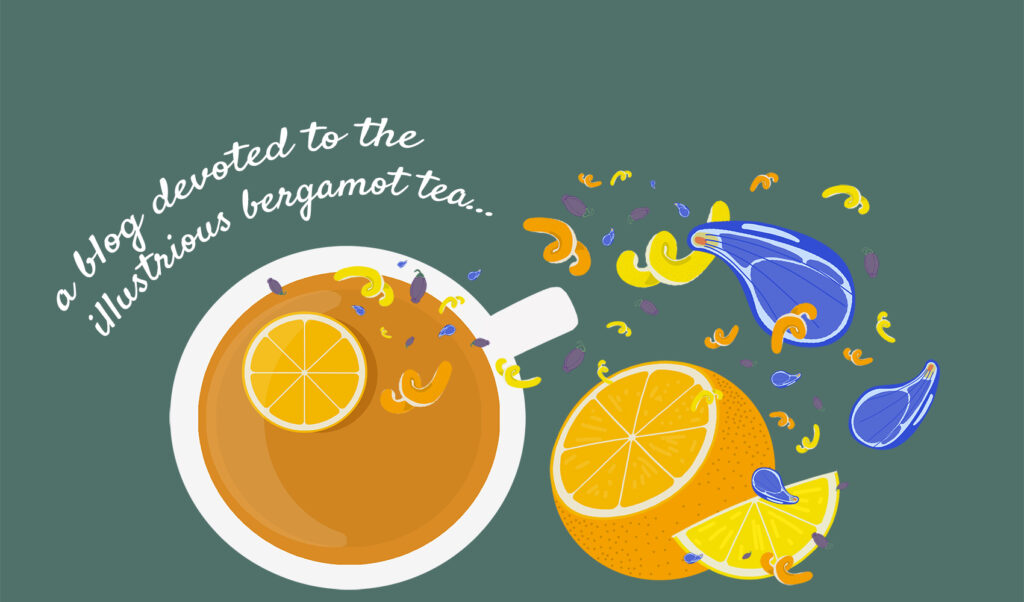There’s nothing quite like a hot cup of Earl Grey to start the day.
But are you brewing it right?
Maybe you’ve noticed that your freshly steeped bergamot tea tastes a little bitter?
Or, perhaps it doesn’t quite pack the same punch as it did at the tea house?
If so, look no further!
Here’s everything you need to know about water temperature and Earl Grey tea.
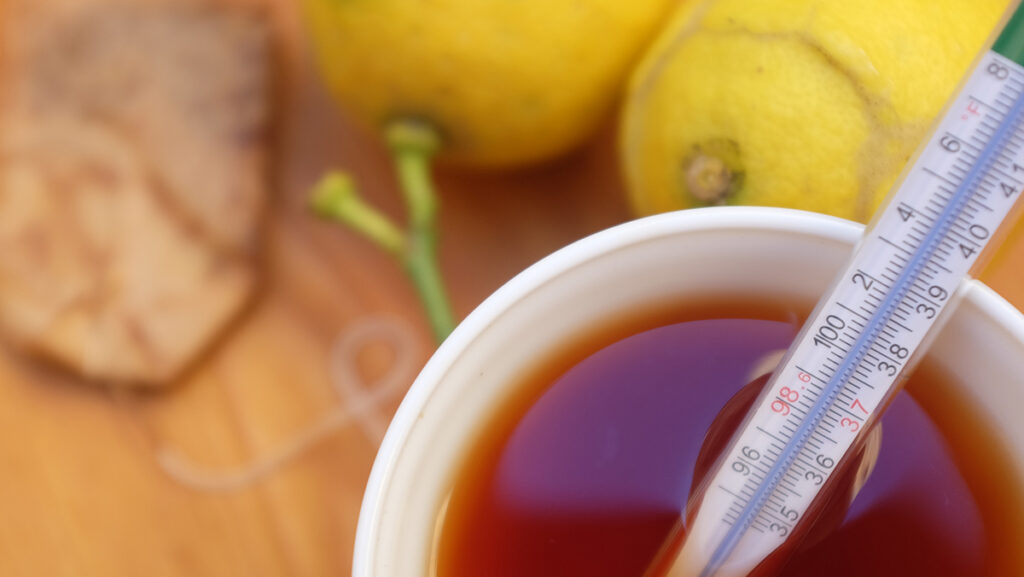
Table of Contents
- Why Brewing Temperature Matters
- Best Water Temperature Based on Earl Grey Tea Type
- Other Teas Used in Earl Grey
- Does Filtered Water Make a Difference?
- Too Hot! Too Cold! Ahhh, This Earl Grey Is Just Right!
Why Brewing Temperature Matters
When making tea, most people consider how long to steep it.
But it’s just as important to brew your Earl Grey at the right temperature!
For instance, if your water is too hot, you risk burning the tea.
As a result, your Earl Grey will be significantly more bitter and less pleasant to drink.
Alternatively, if you use water that’s not hot enough, you’ll end up with a tepid and weak cup of Earl Grey, devoid of any flavour.
So, if you want to ensure that your tea tastes its best, keep on reading.
Best Water Temperature Based on Earl Grey Tea Type
The best temperature to brew Earl Grey depends on the type of black tea used.
Bear in mind, though, bagged Earl Grey typically contains several different tea types.
So, be sure to use your noggin!
And if that fails, you can always read the packet.
Keemun
The original tea used in Earl Grey is Keemun (also known as Qimen).
This Chinese black tea has a full-bodied, floral, and slightly smoky aroma, making it a perfect base for the bergamot flavoured blend.
To get the best out of a Keemun Earl Grey, you should heat the water to 90-95ºC (194-203ºF) and let it steep for around 3 minutes.
Ceylon
Known for being robust enough to withstand the (somewhat controversial) addition of milk, Ceylon is another tea commonly used in Earl Grey.
And due to the hot, low humidity area where it’s grown, this medium black tea can be quite fruity.
As such, you can often find notes of citrus, spice, and chocolate. All of which goes perfectly with bergamot!
The best temperature for Ceylon-based Earl Grey is 90-95ºC (194-203ºF), with a steep time of 3 minutes.
Assam
Assam is an Indian tea known for being strong, robust, and malty.
Due to its high oxidation levels, you can brew this tea at a higher temperature without the risk of it burning.
Typically, Assam is quite chocolatey, making it a delicious addition to an Earl Grey blend.
To do this tea base justice, make sure you brew it in 90-95ºC (194-203ºF) water.
And depending on your preferences, 3-5 minutes is a good steeping range.
Darjeeling
Commonly referred to as the ‘Champagne of tea’, it can only be produced in the Darjeeling region of India.
Typically, Darjeeling tea is delicate and thin-bodied. While the flavour profile ranges from sweet and fruity to slightly smoky.
To brew an Earl Grey with a Darjeeling base, you should use a water temperature between 85-90°C (185-194ºF) and steep it for 3 minutes.
Lapsang Souchong
While significantly less popular, Smoky Earl Grey uses a Lapsang Souchong base.
Traditionally smoke-dried over a pinewood fire, the flavour resembles smoked paprika, pine resin, and dried longan.
Lapsang Souchong, or Smoky Earl Grey, should be brewed in boiling 100ºC (212ºF) water for 2 minutes.
Other Teas Used in Earl Grey
There are countless types of Earl Grey.
And this includes multiple black tea alternatives.
As a basic guide, you should brew these teas at the following temperatures:
- Rooibos: 100°C (212ºF) for 5 minutes
- Honeybush: 93°C (200ºF) for 4-5 minutes
- Green tea: 80-82°C (176-180ºF) for 3-4 minutes
- White tea: 82-85°C (180-185ºF) for 4-5 minutes
- Oolong: 85-96°C (185-205ºF) for 1-5 minutes
Note that the above steep times are all for loose leaf tea.
Bagged tea often contains smaller leaf particles. Therefore, it requires a lesser steep time.
So, as a general rule, tea bags should be brewed for 1-2 minutes less. The temperature will remain the same.
Does Filtered Water Make a Difference?
Does your tea still not taste right?
It could be the water!
Often overlooked, the water quality can make a big difference to your cup of Earl Grey.
Tap water is generally high in minerals and, in some instances, treated with chlorine, fluoride, and other additives.
All of which can affect the overall taste. And make it harder to brew the perfect cup of tea.
Not to mention the impact that limescale can have on your kettle.
So, to avoid disappointment, you should use fresh, filtered water if possible.
Too Hot! Too Cold! Ahhh, This Earl Grey Is Just Right!
Now that you know the best temperature to brew Earl Grey tea, you can share your wisdom (and a cuppa) with the whole family.
Go on, put the kettle on!


